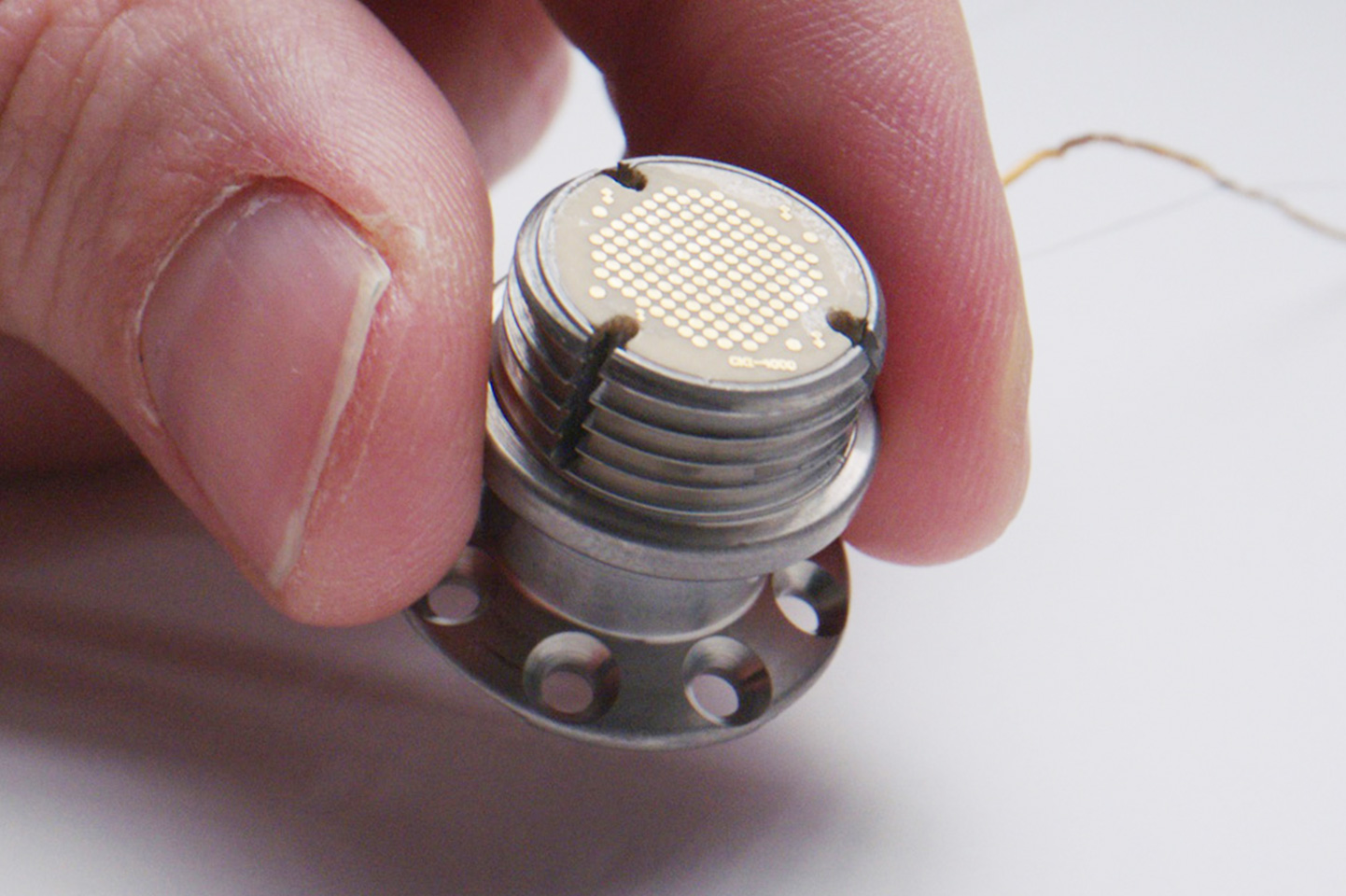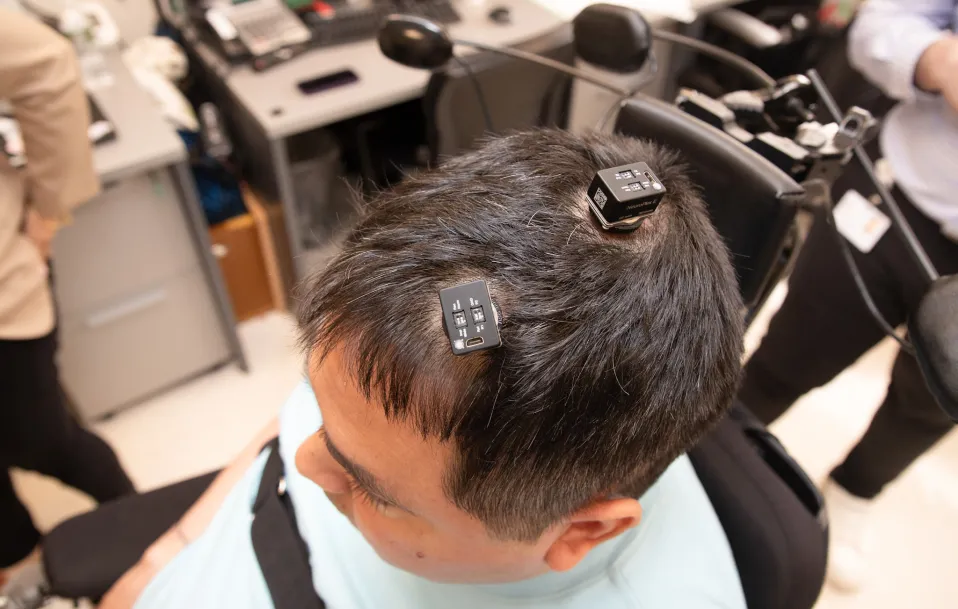For some people, a critical link – the one sending signals from brain to body, the one connecting thought to action – does not work properly, or in some cases, has been severed entirely.
Marcus Gerhardt, CEO and co-founder of the Salt Lake City, UT-based company Blackrock Neurotech, is creating a technology called a brain-computer interface. The tiny implant aims at restoring the connection between mind and motion.
On this episode of Here’s an Idea, Gerhardt explains how a millimeter-sized device, when placed on the brain, offers quadriplegic patients (those with paralysis of all four limbs) and tetraplegic patients (those who cannot move the upper and lower parts of their body) the chance to move a cursor, eat a chocolate bar, and even fist-bump the President.
See how a brain-computer interface works. Listen to this episode of Here’s an Idea below.



